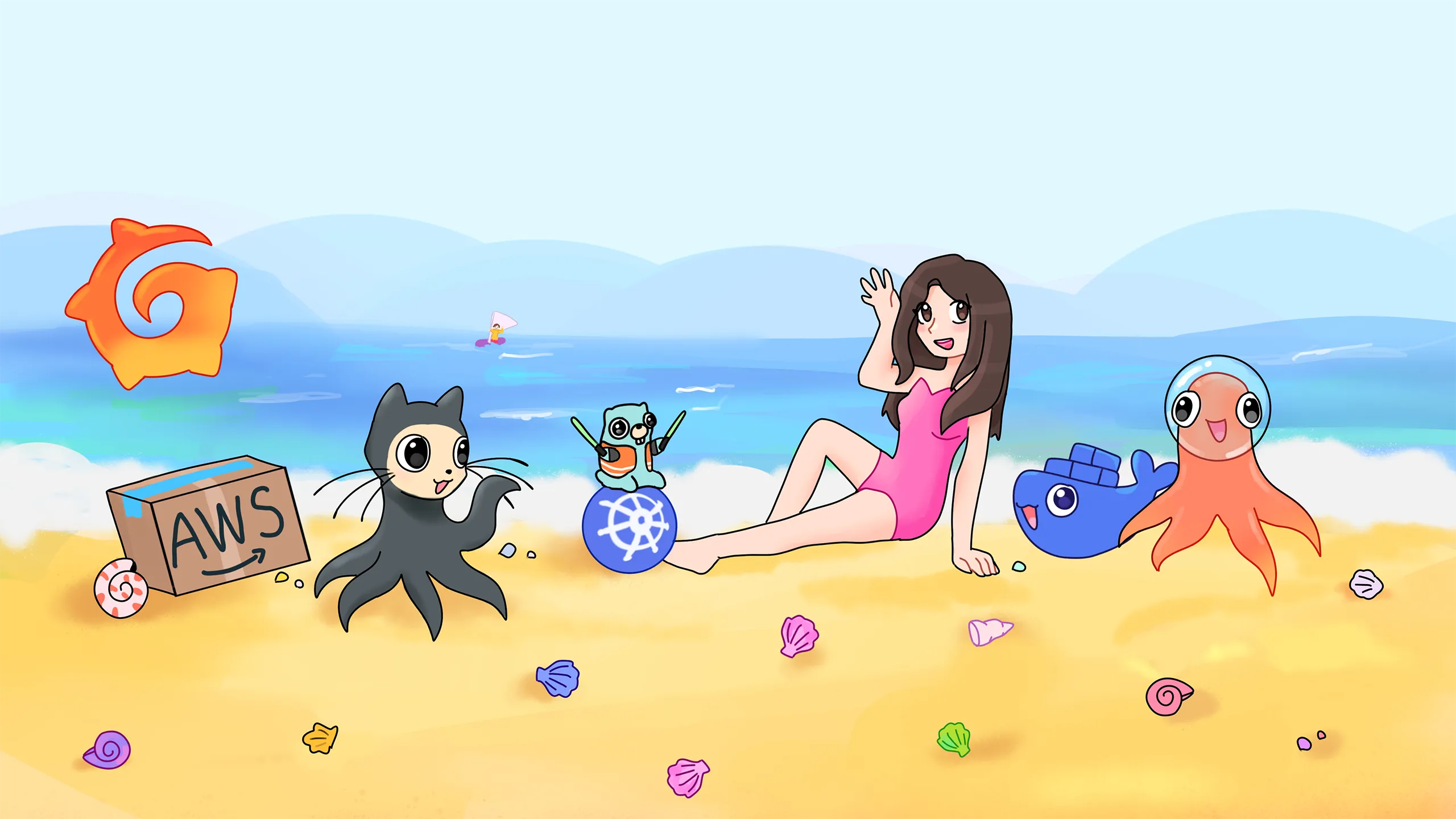Git Merge Conflicts for Beginners - What to Do When Your Branches Have Beef

Hey queens! ✨
Okay, so picture this: you’ve been hustling for days on a sick new feature in your own cozy little branch. The code is flawless, everything works perfectly, and you’re ready to share your masterpiece with the world (or, you know, the main branch). You proudly type out that magic git merge command and… oops! 😬
Git literally screams at you: “CONFLICT! I have no idea what to keep!” Sound familiar? The first instinct is full-on panic mode. You just want to slam your laptop shut and pretend it never happened. But wait! Don’t freak out. We’re gonna walk through this together, and I’ll spill all the tea.
Wait, What Even Is git merge?
Let’s break it down. When you’re working on a project, you create branches, which are basically parallel universes for your code. You can do whatever you want in your own branch without messing up the main project. It’s your personal creative space.
And git merge is the command that brings your universe back into the main timeline.
For example:
git checkout maingit merge feature/new-loginThis is literally you telling Git, “Hey, take all the awesome stuff I built in feature/new-login and add it to the main branch, please!”
When It’s a Buttery-Smooth Ride
(The Fast-Forward Merge)
If you and your teammates were working on totally different files, Git is a total genius. It will seamlessly combine everything on its own, and you won’t even notice. Pure magic! ✨
Technically, this is called a Fast-Forward Merge. It happens when the main branch hasn’t had any new commits since you created your branch. Git just “fast-forwards” the main pointer to include all your new commits.
Sometimes, to keep a clear history, developers force Git to create a merge “knot” even when it could fast-forward. This is done with:
git merge --no-ff feature/new-login…and it leaves a nice little note in the project history saying, “This feature was merged right here.”
When Git Has a Meltdown (aka a Conflict)
A conflict happens when you and someone else (or even you in a different branch) changed the exact same line of code in different ways. Git gets totally overwhelmed. It looks at the two versions and can’t decide which one is right. It’s basically looking at you like, “OMG, girl, I can’t decide. You have to choose!”
What This Hot Mess Looks Like in Your Code
You open the file, and boom — Git greets you with something like this:
<<<<<<< HEADThe version of the code from the main branch=======The version of the code from your new feature/new-login branch>>>>>>> feature/new-loginDon ‘t panic!
This isn ‘t an error — it ‘s Git ‘s way of saying:
“Hey, I found two different versions of this code and I don ‘t know which one to keep. Can you help me out?”
Here ‘s what those weird lines mean:
<<<<<<< HEAD- This is what ‘s currently in yourmainbranch.=======- This line separates the two versions.>>>>>>> feature/new-login- And this is the version coming from your branch.
Okay, So How Do I Fix This? A Step-by-Step Guide!
- Breathe! You’ve got this.
- Analyze the code. Take a look at both versions. Which one do you need? Maybe you need a little bit of both? The final decision is all yours.
- Edit the file. Just delete the code you don’t want and leave only the code that should be there.
- Delete the markers. You have to get rid of the
<<<<<<<,=======, and>>>>>>>lines. They’ve served their purpose. - Save the file.
And that’s it! The conflict in the code is officially resolved.
The Final Steps: Letting Git Know You’re a Genius
Now you just have to tell Git that you’ve handled it and everything is okay:
Tell Git you’ve resolved the conflict in this file
git add <filename>Finalize the merge with a commit
git commitGit will usually pop up a pre-written commit message for you. You can totally just use that.
And you’re done! The merge is complete, and your amazing new feature is safe and sound in the main branch! 🎉
SOS! What If I Messed Everything Up?
If you started fixing a conflict and suddenly realized you’re in way over your head, don’t worry! There’s an escape button:
git merge --abortThis command will completely cancel the merge, like it never even happened. Your project will go right back to how it was before you started. You can take a breath and try again when you’re ready.
How to Vibe with merge and Avoid Conflicts
- Always stay updated! Before you start working on a new feature, always update your main branch. The safest way is a two-step: run git fetch (which just downloads the latest changes without touching your code) and then git merge origin/main (to apply those changes). This seriously lowers the chances of a conflict.
- Stay in your own lane. If you can, try to work on different files than your teammates.
- Communicate! This is the biggest one. Actually talk to your team about who’s working on what. A good convo is the key to a conflict-free life.
The Takeaway
Git conflicts are not the end of the world. They’re totally normal. It doesn’t mean you’re a bad developer. It’s just Git’s way of saying, “Hey! I’ve got two different things here—can you help me choose?”
And now you know exactly how to help. Honestly? You’re already one step closer to feeling like a total pro in Git.
Keep coding, girl! You’re killing it! 💖
Tools I Personally Trust
If you’re building things, breaking things, or just trying to keep your digital life a little calmer - these are tools I actually use every day:
🛸 Proton VPN (60% off link) - my invisible cloak online. It secures your Wi-Fi, hides your IP, and blocks trackers - even on the sketchiest café Wi-Fi.
🔑 Proton Pass (50% off link) - my password vault. On-device encryption for logins, 2FA, and notes - all mine and only mine.
🦑 GitKraken Pro (50% off link) - my visual Git sidekick. Gorgeous commit graph, painless merges, and fewer “what just broke?” moments.
💖 These links give you sweet discounts - and help support DevOps.Pink at no extra cost. Thanks a ton!
Social Channels
🎬 YouTube
🐦 X (Twitter)
🎨 Instagram
🐘 Mastodon
🧵 Threads
🎸 Facebook
🦋 Bluesky
🎥 TikTok
💻 LinkedIn
📣 daily.dev Squad
✈️ Telegram
🐈 GitHub
Community of IT Experts
👾 Discord
Refill My Coffee Supplies
💖 PayPal
🏆 Patreon
🥤 BuyMeaCoffee
🍪 Ko-fi
⚡ Telegram Boost
Is this content AI-generated?
Absolutely not! Every article is written by me, driven by a genuine passion for Docker and backed by decades of experience in IT. I do use AI tools to polish grammar and enhance clarity, but the ideas, strategies, and technical insights are entirely my own. While this might occasionally trigger AI detection tools, rest assured—the knowledge and experience behind the content are 100% real and personal.

